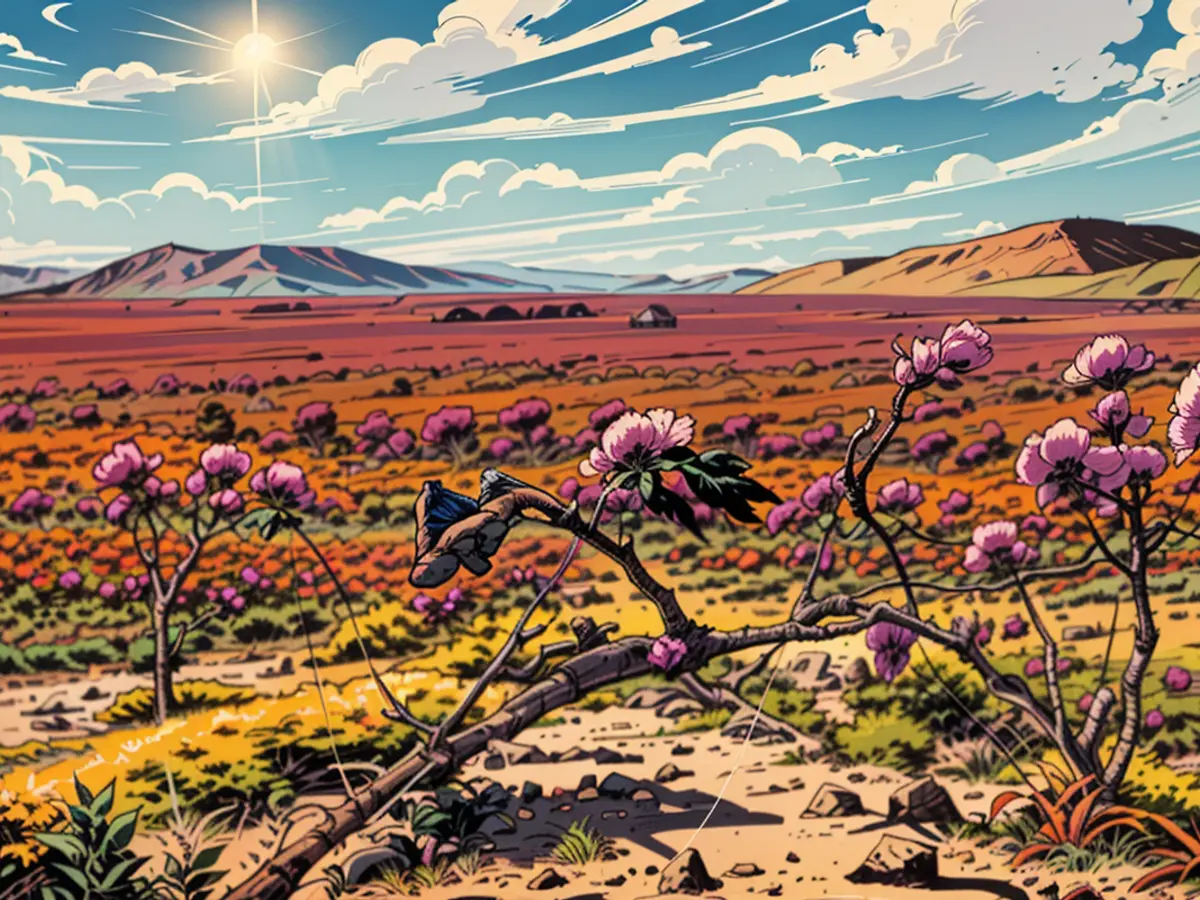Rainfalls make Chile's Atacama Desert bloom unusually early
At the blooming Atacama Desert, we are dealing with a well-known weather phenomenon that usually doesn't occur until September. This early blooming of the Atacama Desert, as seen this year, hasn't happened since 2015.
The current bloom covers approximately 300 to 400 square kilometers. The blooming "desert" that typically occurs annually in September covers about 15,000 square kilometers instead. At its peak, over 200 plant species bloom. However, during the current phenomenon, only the "Guanaco Hoof" or the vivid purple flower, which almost doesn't need water, is predominantly present.
Scientists have not yet determined if the unusual winter bloom that occurred during the Chilean winter 2015 is "directly related to climate change or to the phenomena El Niño or La Niña."
The unusual weather in the Atacama Desert, causing its early blooming, is a rare occurrence that last happened in 2015, as reported by AFP. Despite the desert's lack of typical rainfall, this year witnessed a significant increase in rainfalls, supporting the growth of the Guanaco Hoof, a plant species known for its resistance to scant water. This unexpected spike in rainfalls in the usually arid Atacama Desert has led to a small-scale bloom, covering only 300 to 400 square kilometers, in contrast to the usual 15,000 square kilometers during September.







